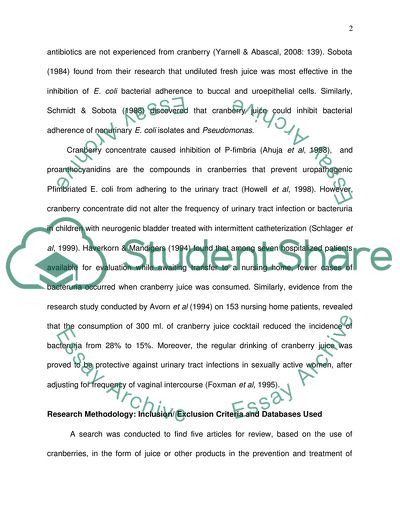Cite this document
(The Use of Cranberry Juice to Prevent Minor Urinary Tract Infections Article, n.d.)
The Use of Cranberry Juice to Prevent Minor Urinary Tract Infections Article. Retrieved from https://studentshare.org/health-sciences-medicine/1721204-reasearch-appreciation-and-dissemination-does-cranberry-juice-prevent-urinary-tract-infections
The Use of Cranberry Juice to Prevent Minor Urinary Tract Infections Article. Retrieved from https://studentshare.org/health-sciences-medicine/1721204-reasearch-appreciation-and-dissemination-does-cranberry-juice-prevent-urinary-tract-infections
(The Use of Cranberry Juice to Prevent Minor Urinary Tract Infections Article)
The Use of Cranberry Juice to Prevent Minor Urinary Tract Infections Article. https://studentshare.org/health-sciences-medicine/1721204-reasearch-appreciation-and-dissemination-does-cranberry-juice-prevent-urinary-tract-infections.
The Use of Cranberry Juice to Prevent Minor Urinary Tract Infections Article. https://studentshare.org/health-sciences-medicine/1721204-reasearch-appreciation-and-dissemination-does-cranberry-juice-prevent-urinary-tract-infections.
“The Use of Cranberry Juice to Prevent Minor Urinary Tract Infections Article”, n.d. https://studentshare.org/health-sciences-medicine/1721204-reasearch-appreciation-and-dissemination-does-cranberry-juice-prevent-urinary-tract-infections.


